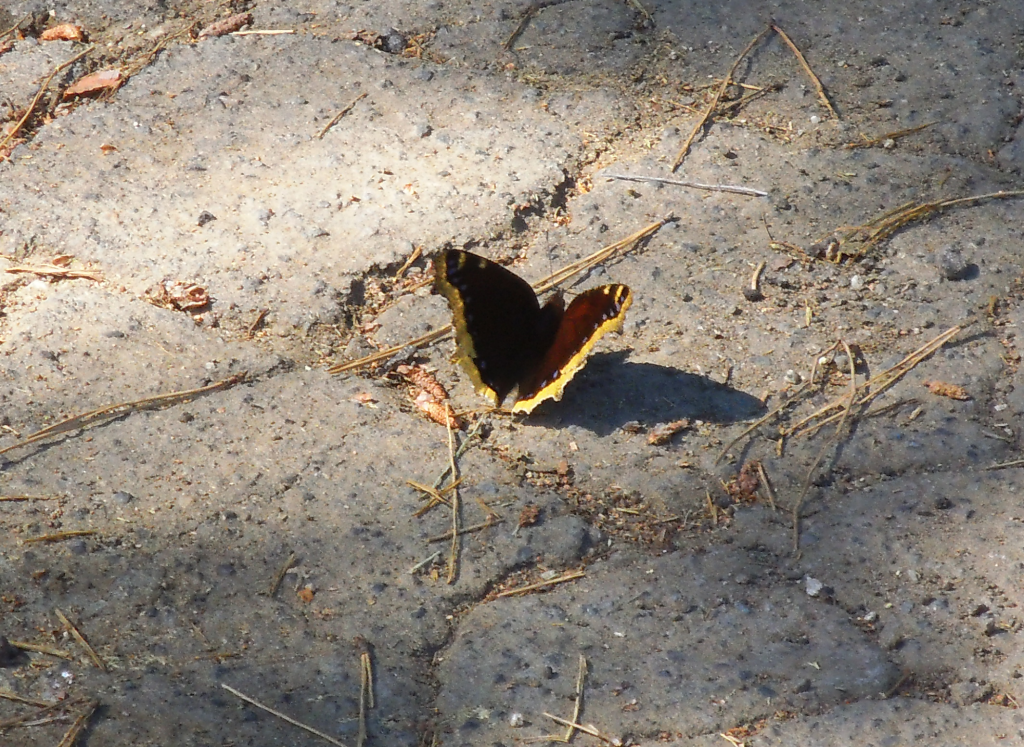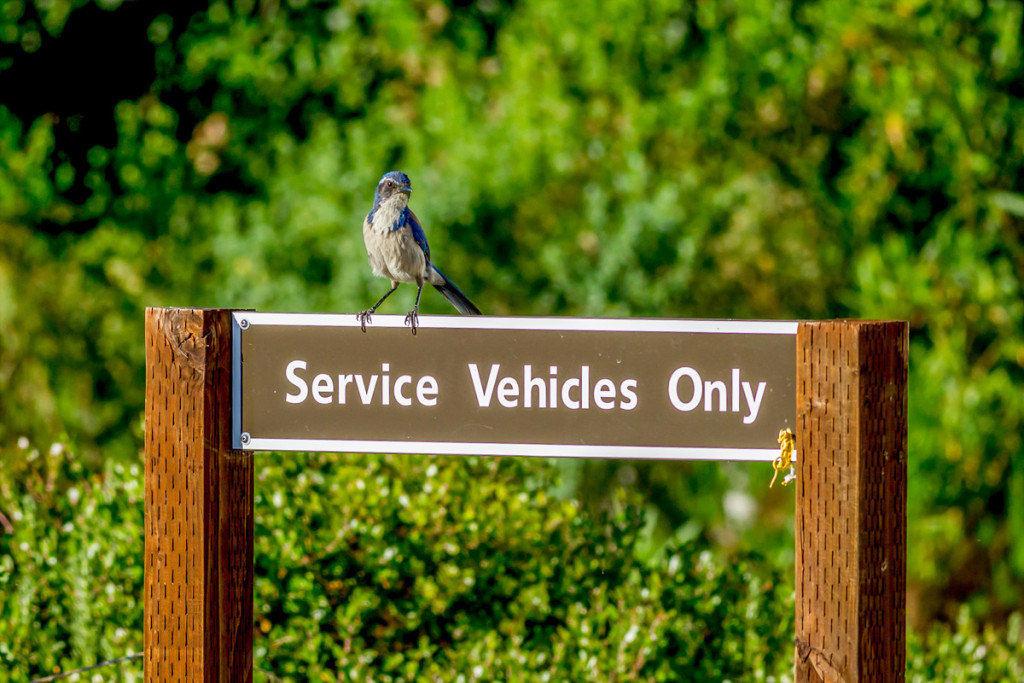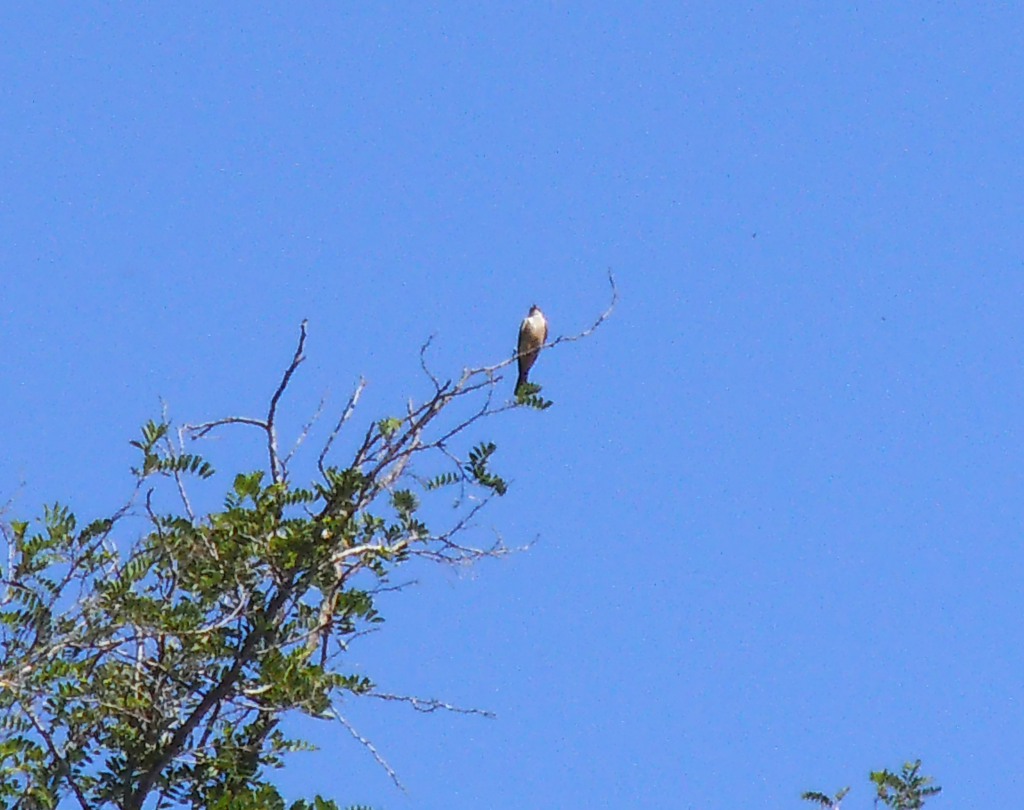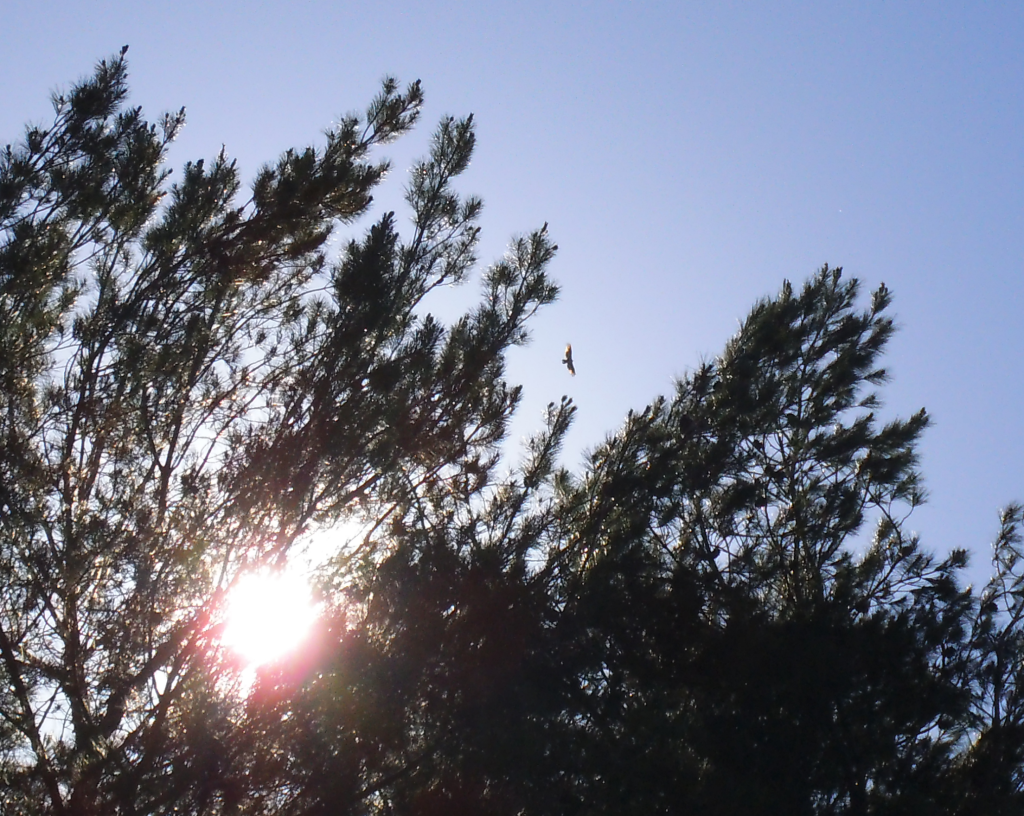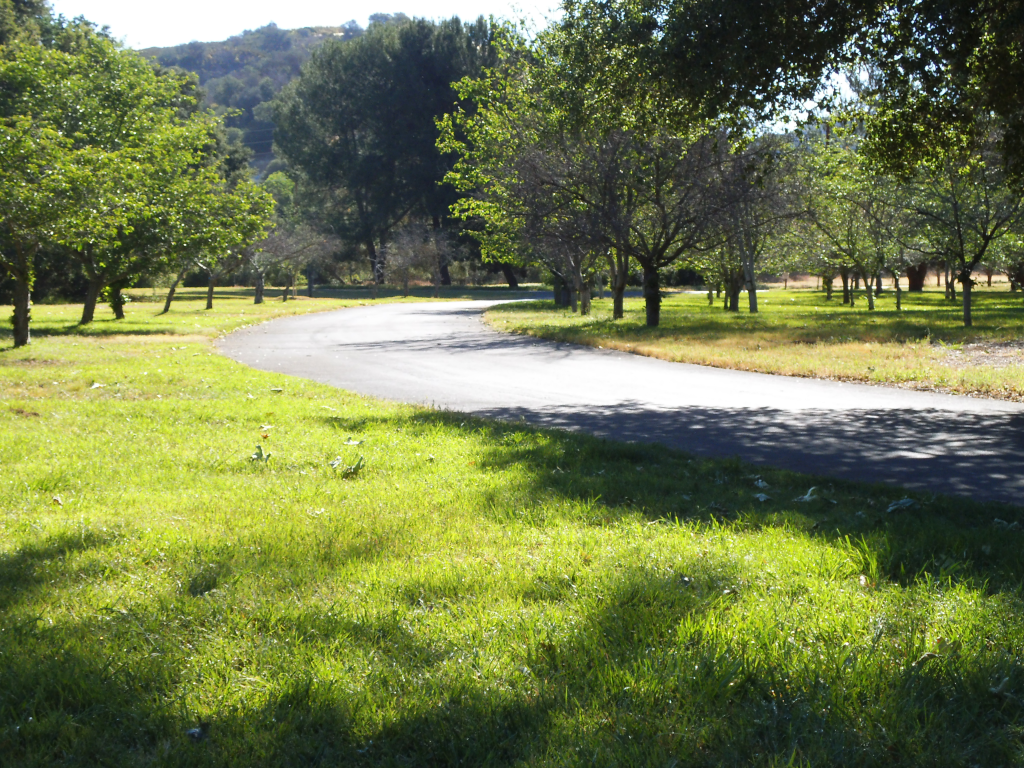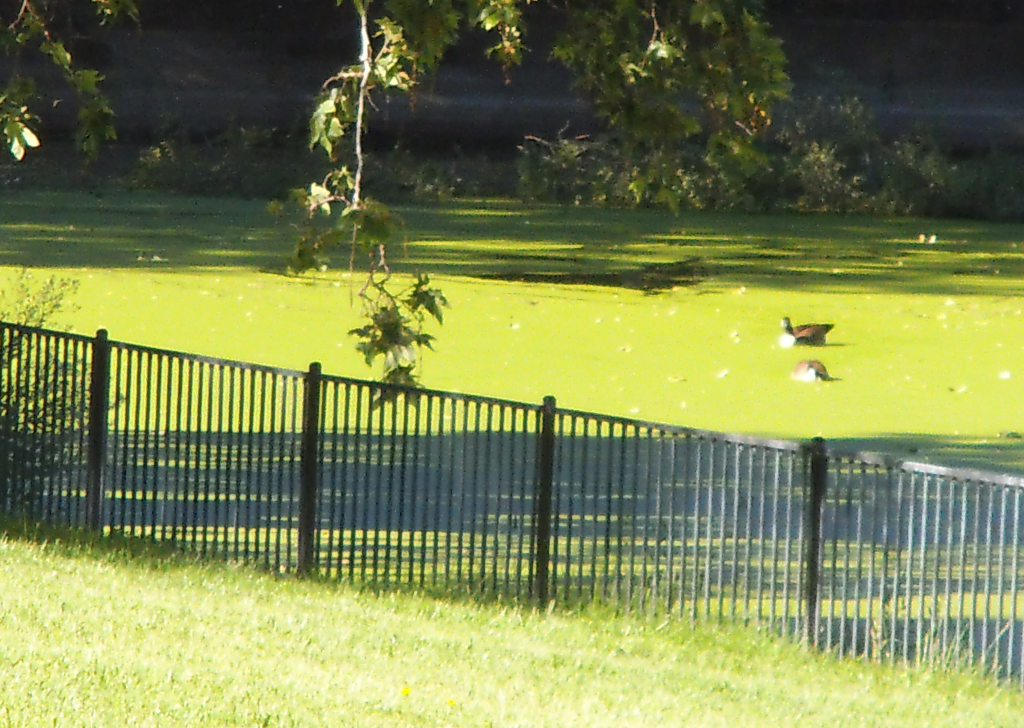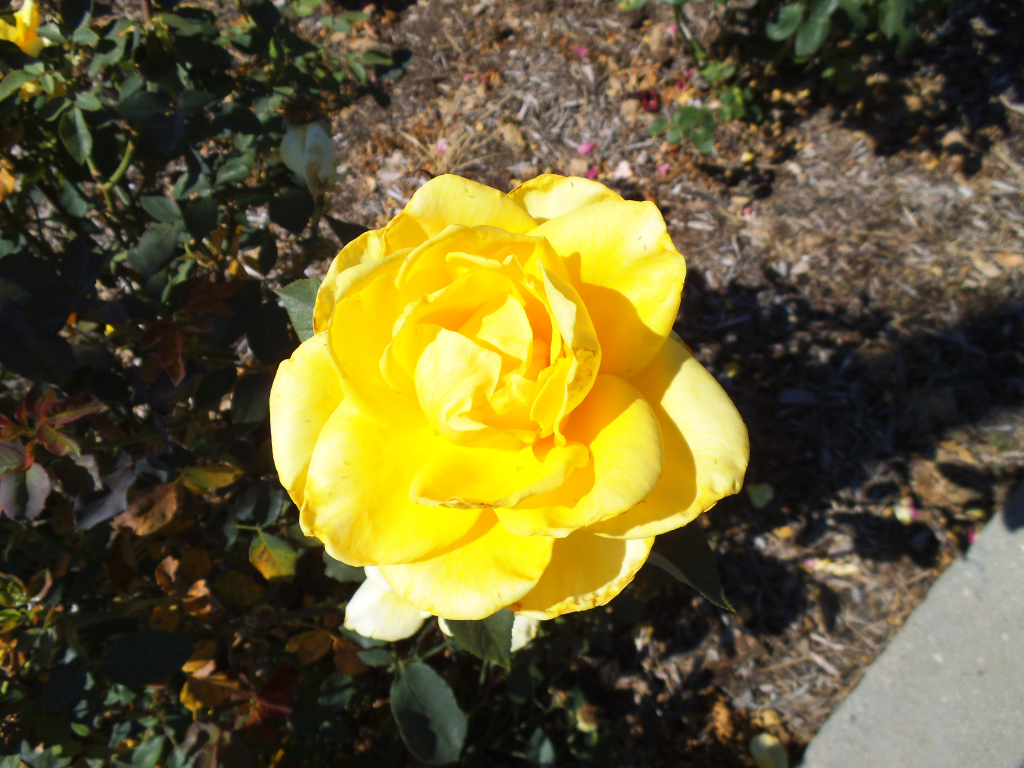We celebrated Bird LA Day by attending a free activity at the Santa Monica Mountains Interagency Visitor Center. Actually, the event was outside as it was a volunteer-led walk around the King Gillette ranch grounds. The activity focused on bird watching and included tips for photographing birds and wildlife.
Photo by Connor Green
Volunteer park ranger, Kerry Perkins, led the walk. In attendance were a varied group of birders, photographers, and bird-watching photographers. Young and old, our gear included binoculars, a plethora of DSLR cameras, big zoom lenses, and a smattering of point-and-click and smart phone cameras.
Photo by Kerry Perkins
The grounds were beautiful and the temperatures still mild enough to be pleasant. I can’t say that there were flocks and flocks of birds, but the avian enthusiasts spied and threw about beaucoup bird names like they were going out of style. Wild parrots, orioles, acorn woodpeckers, owls (didn’t see any though), warblers, Anna’s hummingbirds, red-shoulder hawks, red-tailed hawks, Canada goose, crows, ravens, mockingbirds, white-breasted nuthatches, and swallows.
Photo by Connor Green
With the exception of owls and red-tailed hawks, we spied almost every other bird on the list. Perkins noted that you might be able to spot owls in the Satwiwa area of the Santa Monica Mountains and that they’re quiet when they fly. You’ll have to see them rather than hear them coming. He noted the difficulty in describing or relating information about bird calls, as it’s tough for many of us to mimic bird speak. Perkins had recorded bird calls on a smart phone and played them back for us.
For help identifying bird, try this site:
Other tips included how to tell different birds from the same family or genus apart; for example, an acorn woodpecker from other kinds of woodpeckers. The acorns drum or wood peck slower while others peck at a faster steady beat. Acorns also “laugh” at you. Red-shouldered hawks sound more like you would expect a hawk to sound like; e.g., caaaw, caaaw, caaaw. A red-tailed hawk not so much. The Anna’s hummingbird call is slower than other kinds. There’s a list of differences between crows and ravens. Ravens always say, “Nevermore.” Oops, just kidding. Actually, ravens do make all kinds of sounds whereas crows pretty much use that one type of loud caw, caw, caw. Ravens have massive beaks. “Ginormous.” Ravens have mid tail feathers that are longer. Crows have tail feathers that are all the same length. Ravens are more solitary, seen singularly or in pairs. Crows like to hang out together in groups whereas Ravens “kettle” while crows don’t tend to soar.
Different flight modes are another characteristic that can help identify birds. Woodpeckers are “dippers.” Their flight line is more like a roller coaster than a straight line like ducks. Ducks wings beat fast. Hawks glide. They’ll catch a thermal updraft and ride it in an upward spiral, and then glide down with wings outstretched.
Photo by Connor Green
Perkins, a photographer with decades of experience, had a slew of tips for us birders. When photographing birds:
-
Don’t chase. You’ll take pictures from behind and get pictures of, well, bird’s behinds.
-
Be patient. Be still and wait for the birds to come to you.
-
May is nesting season for some birds. This is a good time of year to take pictures.
Tips about the lighting involved with bird photography include:
-
Don’t shoot into the sun.
-
In other words, back lit is not optimal.
-
The camera only knows light.
-
Mixed light is your worst enemy.
-
Don’t compose with a range of light, such as bright light to shadow.
-
DSLRs cannot accommodate the range of light like film could.
-
Expose for your subject. Ignore the background.
A few more tips regarding the mechanics of bird and wildlife photography are:
-
Manual mode is the easiest way to shoot.
-
There’s just not time to constantly adjust for changing conditions. Set the settings and then work on taking pictures.
-
Set ISO to 400 or 800. For more about ISO there are plenty of tutorials, but here’s one.
-
F5.6 aperture.
-
Adjust shutter speed to accommodate for two light conditions: light or shade. To quote Perkins: “Wildlife photography is all about shutter speed.”
-
He suggests spot metering.
-
Modern DSLRs have good sensors. Take advantage of them.
-
You can’t make a bad photograph good with Photoshop.
Also keep in mind basic composition principles when composing a photograph. You can use leading lines to draw the eye into a composition. For example, a road that narrows in the distance can lead the eye into the picture. Trees along the road can also provide perspective as to the vanishing point and horizon line. We paused in front of a landscape scene that illustrated these principles.
Photo by Connor Green
Other nicely composed photo opportunities presented themselves during the walk. For example, Canada geese on a sweep of bright green duck weed in the pond.
Photo by Connor Green
By one of the larger buildings a small flock of cliff swallows were gathered. Their wings beat rapidly as they poked at the puddle. After securing some mud, they would fly back up under a roof eave to add mud to their nests.
Perkins notes that an occasional naysayer will sometimes disagree with his suggestions, but you can’t argue with results. He recently had showings of bird photography on display at both the Satwiwa and King Gillette visitor centers. Also, you can view his avian portfolio at his web site: Kerry Perkins Photography.
Photo by Connor Green
